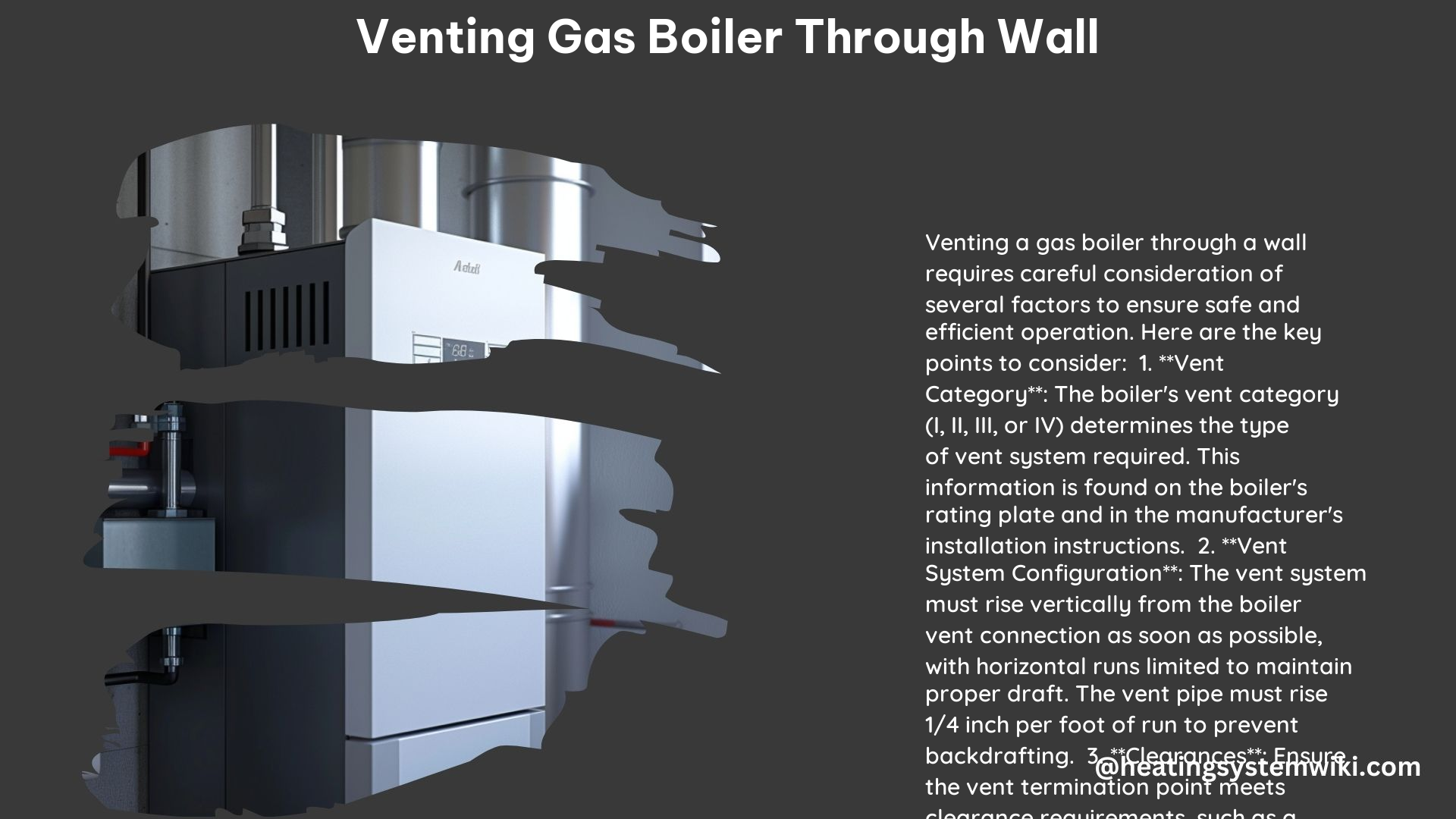Venting a gas boiler through a wall is a common practice, but it requires careful consideration to ensure safety, efficiency, and compliance with local building codes. This comprehensive guide will delve into the technical details, safety concerns, and alternative solutions to help you navigate the process of venting your gas boiler through a wall.
Safety Concerns
Clearance Requirements
The National Fuel Gas Code (NFGC) and the International Residential Code (IRC) both specify the minimum clearance requirements for gas boiler vents. According to these codes, the vent terminal must be located at least 4 feet (1.2 m) horizontally from any opening into the building, such as a window, door, or gravity air inlet. Additionally, the vent terminal must be located at least 12 inches (30 cm) vertically from the ground or any other obstruction. These clearances are essential to prevent backdrafting and ensure proper ventilation.
Backdrafting
Sidewall venting of a gas boiler can lead to a phenomenon known as backdrafting, where the exhaust gases re-enter the home through nearby windows, doors, or other openings. This can result in a dangerous buildup of carbon monoxide, which can cause health issues and discomfort for the occupants. To mitigate this risk, it is crucial to carefully consider the placement of the vent terminal and ensure that it is located away from any potential sources of backdrafting.
Combustion Efficiency
High-efficiency gas boilers, such as those with an AFUE (Annual Fuel Utilization Efficiency) rating of 90% or higher, produce condensate as a byproduct of the combustion process. This condensate must be properly managed to prevent it from causing damage or creating a nuisance. The venting system must be designed to handle the condensate effectively, either by incorporating a condensate drain or by using materials that are resistant to corrosion from the acidic condensate.
Technical Specifications

Venting Systems
Gas boilers can be vented using a variety of systems, including:
- Chimney Vented: The boiler’s exhaust is directed into a traditional masonry or metal chimney, which provides natural draft for the venting.
- Power Vent: The boiler is equipped with a built-in fan that actively pushes the exhaust gases through the vent system, allowing for more flexibility in vent configuration.
- Direct Vent: The boiler draws in combustion air from the outside and vents the exhaust directly to the outside, typically through a sidewall or roof. This is a common configuration for high-efficiency boilers.
When venting a gas boiler through a wall, the direct vent system is often the preferred choice, as it allows for a more compact and efficient installation.
Vent Pipe Materials
The material used for the vent pipe must be suitable for the exhaust temperatures and corrosive nature of the condensate produced by high-efficiency boilers. PVC (polyvinyl chloride) and CPVC (chlorinated polyvinyl chloride) are commonly used materials for these applications, as they can withstand the lower exhaust temperatures and are resistant to the acidic condensate.
Vent System Configuration
The configuration of the vent system is crucial to ensure proper draft and prevent backdrafting. The vent pipe should rise vertically from the boiler connection, with any horizontal runs kept to a minimum. This helps maintain the necessary draft and prevents the accumulation of condensate, which could impede the flow of exhaust gases.
Alternatives and Solutions
Vertical Venting
Extending the exhaust pipe vertically through the roof can be an effective solution to prevent backdrafting and ensure proper ventilation. This approach may require additional installation costs and considerations, such as the potential for condensate freezing in cold climates.
Chimney Venting
If a suitable chimney is available, using it for venting the gas boiler can be a viable option. Chimney venting allows for natural draft, which can be more efficient than sidewall venting. However, the condition and suitability of the existing chimney must be carefully evaluated.
Boiler Maintenance
Regular maintenance of the gas boiler, including combustion efficiency checks and cleaning of the venting system, can help minimize issues related to venting and ensure safe and efficient operation. It is recommended to have a qualified HVAC technician perform these maintenance tasks to ensure the system is functioning as intended.
Conclusion
Venting a gas boiler through a wall requires careful planning and attention to safety, technical specifications, and local building codes. By understanding the clearance requirements, mitigating the risk of backdrafting, and selecting the appropriate venting system and materials, you can ensure a safe and efficient installation. Additionally, exploring alternative solutions, such as vertical venting or chimney venting, and maintaining the boiler regularly can further enhance the performance and longevity of your gas boiler system.
References
- National Fuel Gas Code (NFPA 54)
- International Residential Code (IRC)
- ASHRAE Handbook – HVAC Systems and Equipment
- Manufacturer’s installation instructions for specific gas boiler models
- Local building and HVAC codes and regulations
